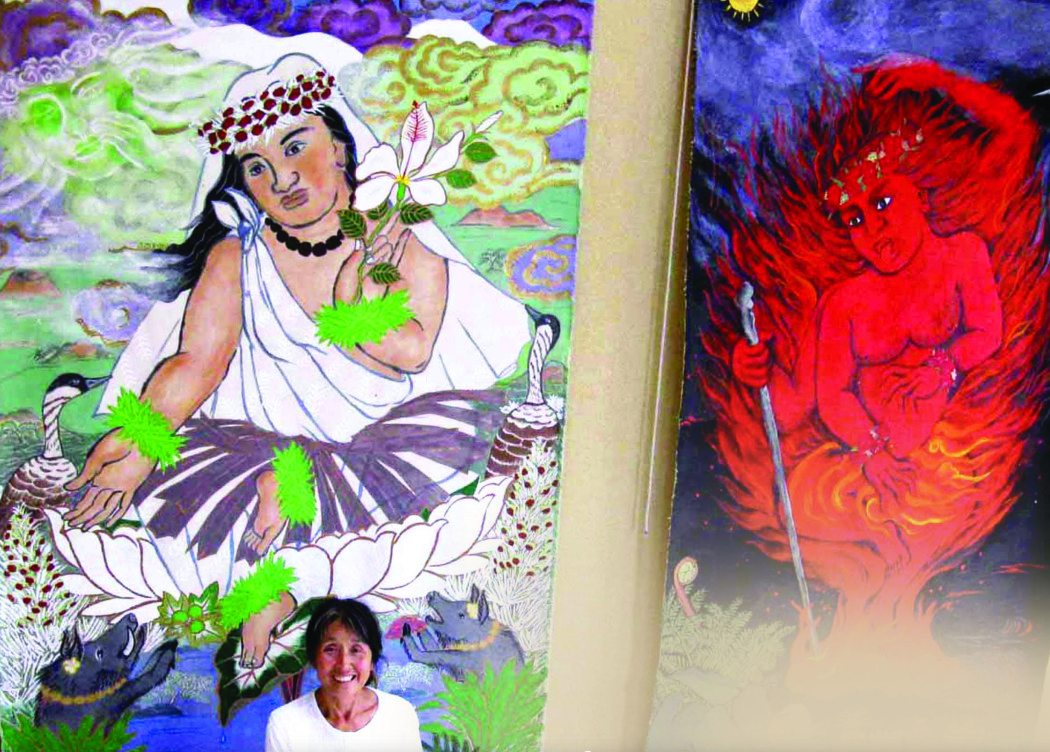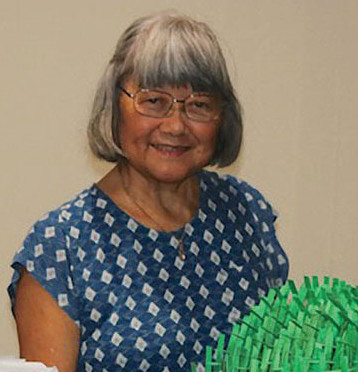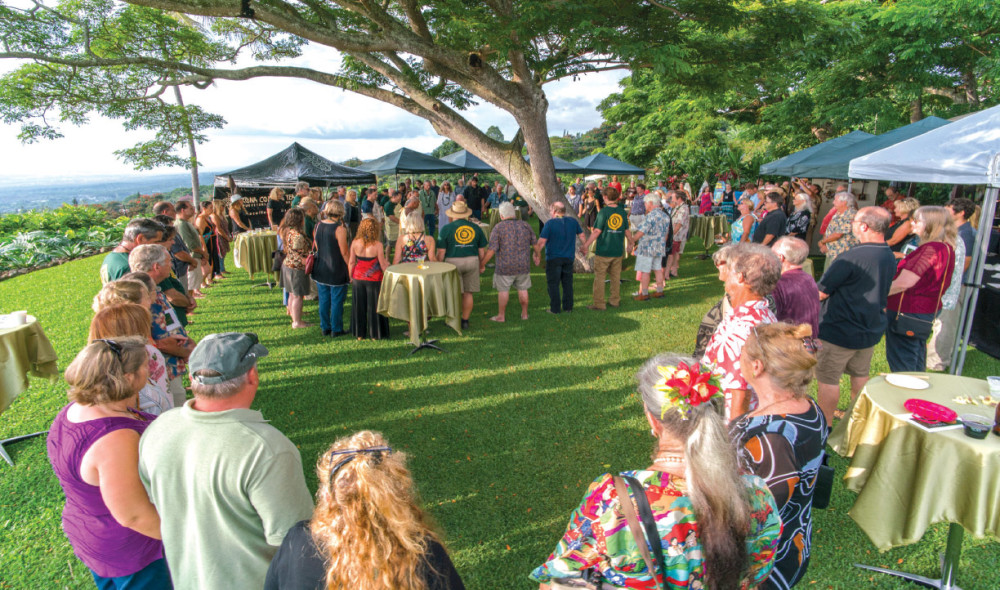
Abled Hawai‘i Artists: Promoting a ‘Renaissance of Inclusion’ in our Hawai‘i Island Community
By Paula Thomas
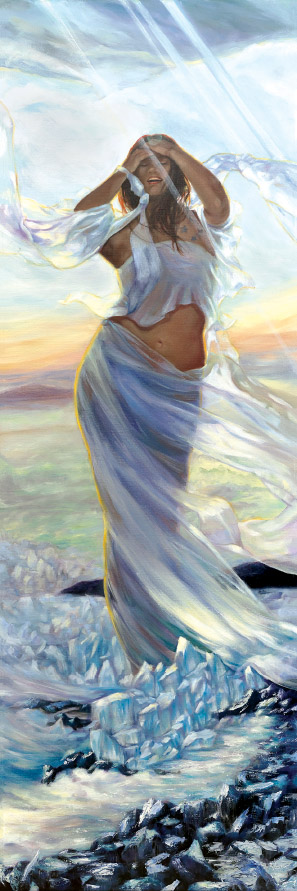
Mar Ortaleza’s work centers around helping adults with disabilities live a fuller life. An employment specialist at the Hawai‘i Island nonprofit Full Life, Mar’s job is to help his clients develop skillsets and find gainful employment. He calls it matchmaking—linking the uniquely-abled with a long-term employment opportunity that will provide his clients with economic stability and financial independence.
Mar has been in this field for more than 10 years, and in many ways, it’s a variation on the matchmaking theme which characterized the essential nature of his previous jobs on the mainland.
Mar moved to Hawai‘i Island from Seattle where he worked for large corporations. “I worked in health insurance, hospitality management, and homeowners association management. I had reached a point in my life where I wanted to have more meaningful work. I wanted to make a difference and relocate to Hawai‘i,” he says.
He relocated but wasn’t yet settled when he was asked to assist nature photographer Louie Perry III to build a photography business that Louie could manage. Louie, an avid runner who represented the United States in the Special Olympics World Games in Athens, Greece, flourished in photography with Mar’s help.
It was this successful venture with Louie that inspired and enabled Mar to connect with Full Life, a service provider that empowers people with developmental disabilities to live self-determined, full lives. Once Mar and Louie started with Full Life, he could leverage his time and a few resources to expand Abled Hawai‘i Artists, or AHA, to support more people like Louie.
AHA started in 2008 and is a strictly volunteer organization founded to support artists who are uniquely-abled. Its mission is to raise awareness about the local community of people with disabilities, which he sees as an integral part of our vibrant culture in Hawai‘i.
AHA’s signature event is a summer arts festival to be held this year on July 22 at the Prince Kūhiō Plaza in Hilo 10am–3pm. This year marks the 10th anniversary of the festival that showcases the creations of over 30 AHA artists and includes demonstrations on music therapy, healing arts, tai chi, a silent auction, music, and free activities for the keiki (children). The festival is the key way AHA provides support (monetary and otherwise) for practicing artists.
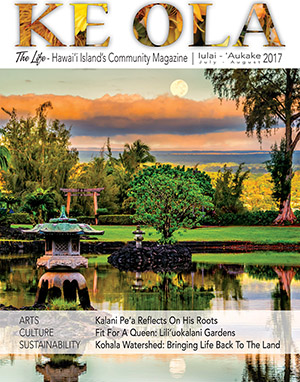
Beyond the summer festival, AHA organizes collaborative events to promote individual abilities and employment exploration in the arts. Mar leverages the resources of nearby The Makery and the Hawai‘i Museum of Contemporary Art/East Hawai‘i Cultural Center for exhibits, studio space, jobs, skill development, equipment, supplies, and mentoring.
“I like to call people with disabilities uniquely-abled,” he says. “I want to see a renaissance where they are recognized, appreciated, acknowledged, and hired for their skills and talents, just like the rest of us.” Mar is all about heart, and it’s clear that AHA is all about harnessing heartfelt effort to make life work.
As an example, take Rose Adare, a fiercely talented and nationally recognized portrait painter. To look at her paintings, you would never suspect that she has difficulty moving her fingers and cannot stand for long periods of time. Afflicted with Ehlers Danlos Syndrome (EDS) and other conditions—including fibromyalgia, scoliosis, vocal cord dysfunction, and chronic pain, to name a few—Rose adapted her painting style to adjust to her changing medical conditions.

When unable to work with fine brushes owing to pain, she turned to experimentation with larger shapes and texture using gesso (a paintable material that is like a blend of white glue and spackle). A whole new style emerged, born of necessity, and it has amazed even Rose.
She takes on students, only a handful at a time, as a way to supplement her income and is planning to open a new studio in the not-too-distant future. Most of what she does is supported by AHA in some way, and the reciprocity that exists between her and Mar has spawned a deep friendship. “Mar wears about 20 hats, and is just the most amazing person,” Rose says.
Rose was seven when she declared that she wanted to paint. To this day, she’s not sure what it is that made her say it. At the time, school was problematic, plus she had eye trouble. Her parents were frustrated.
But when they gave her the tools to paint, she took off. In high school, she completed a large canvas at home. When she brought it into school, her instructor assumed that Rose purchased the work, put her name to it, and submitted it. After parental intervention and much protest, Rose’s failing grade was raised to a D-.
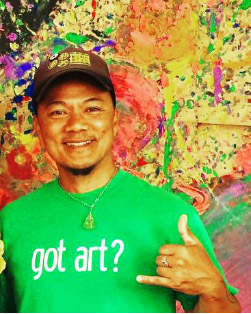
Even with that negative academic experience, she graduated with a bachelor’s degree in fine art from the San Francisco Academy of Art. Instead of enrolling in a master’s program, Rose, at 28, was accepted to The Atelier for Classical Realism run by the living master David Hardy. This immersive experience shaped her as a fine artist.
Because she was mentored, coached, and nurtured as a painter, Rose is paying it forward in her own space, The Muse Studio.
Since she can currently only take six students at a time, she is ready to expand. A two-car garage-size studio in HPP will be the new home to Muse in the summer of 2017, and Abled Hawai‘i Artists will provide any support it can.
Rose’s extraordinarily detailed portraits lovingly contextualize subjects in every way a full-body portrait can, through choice of scene, background mood colors, surrounding objects, clothing, accessories, facial expression. Treatment of light, shadow, brushstroke, how paint is laid on—these factors all contribute to the emotive quality of her work.
It’s as though you can hear and feel the essence of her subjects on the canvas. That’s because Rose is able to “see” right into people she paints. She connects to the spirit of her subjects, and from there works intuitively, instinctively, always listening to what the brushes, the canvas, the colors want to say.
“If I feel some resistance, I’ll take a break,” she notes. “I don’t want to fight with my brushes or the colors. If I do, it will show up on the canvas.”
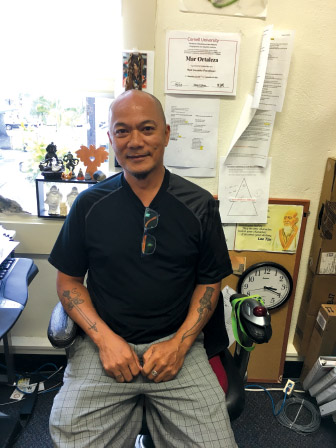
In May 2017, her latest book was published: The Comprehensive Pocket Guide for the Badass Artist, full of great tips and techniques for artists at any skill level as well as tips on how to develop one’s professional career. As Rose raises funds through Indiegogo for the new studio, anyone who donates is entitled to a free copy. Rose is nothing if not extraordinarily talented, determined and prolific.
So too is Michael Nizo, an artist in Hilo who works with woods like birch, poplar, mahogany, and koa. Michael’s business, Nizo Natural Precision, stems from his surname, Nizo, the fact that he works with “natural” materials, and uses a laser so that each piece is cut with absolute “precision.”
As Michael reveals, Mar is one of his greatest promoters. Michael sells finely designed Hawaiian-themed laser-cut wood jewelry, fun educational puzzles, key chains, lamps, coasters, and ornaments, mostly at craft fairs. He graduated in 2013 from Technology for Untapped Talent where he learned computer-aided design and laser-cutting and he honed his skills at The Makery. Michael goes into his studio in Pana‘ewa about three days a week to create and produce.
An only child with a large extended family, he is a quadriplegic with limited use of his arms and legs. As a kid he was an all-star baseball player, always outdoors, in love with the game of baseball. Today he doesn’t spend much time outdoors at all and realizes that compared to who he was, his old friends wouldn’t find him all that much fun.

While he can drive and get himself to work, his left side is weaker than his right and small work with fingers is very difficult. Despite this, Michael says “the hardest part is the designs,” which he does on a computer. “But once you have that, the laser does the rest.” Michael’s work includes inlays in the earrings and etching that add depth and dimension to the coasters, key chains, and lamps.
He became disabled at the age of 14 as a result of a jump off Hanalei Pier on Kaua‘i. To this day, the doctors don’t know why or how he sustained such a catastrophic injury, since he wasn’t the only kid who was enjoying plunging into the water from the pier on that fateful day. All he remembers is attempting a dive and waking up in a hospital with people around him crying.
His injuries led to nine months of critical care and rehabilitation in a Sacramento pediatric orthopedic hospital for a bruised spinal cord that required fusion of several vertebrae in his neck.
Michael remembers the hospital because he saw many traumas there—young kids with severe burns, and amputees. “I grew up fast,” he remembers. “No patient there was over 21. I saw some horrible things and realized that I was lucky.”
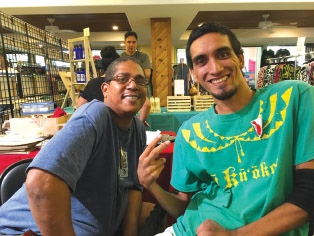
His father stayed with him although he told him he needed to put in 110%. “We can do this together,” he said, but Michael had to be all in. He was, and after nine months Michael was able to return home.
Years later, since working with Mar and developing NN Precision, Michael sells at craft fairs and at AHA’s summer festival (as long as he has assistance for set-up and transport), and he receives large orders—a recent one came in from Kamehameha Schools for his Hawaiian themed puzzles. Under each piece is a drawing or a Hawaiian word, so they serve an educational purpose. What he doesn’t sell he may send to his mother, who has a stand at a local market on Kaua‘i.
As Mar noted, it’s time for a renaissance, for the community to awaken to the abilities of people who are uniquely-abled. They have lots of talent and drive, and need support and assistance. His mission is to make sure they get a lot of both. ❖
To get involved with AHA and help our local artists, contact Mar Ortaleza at 808.895.5353 or aharts808@gmail.com.
